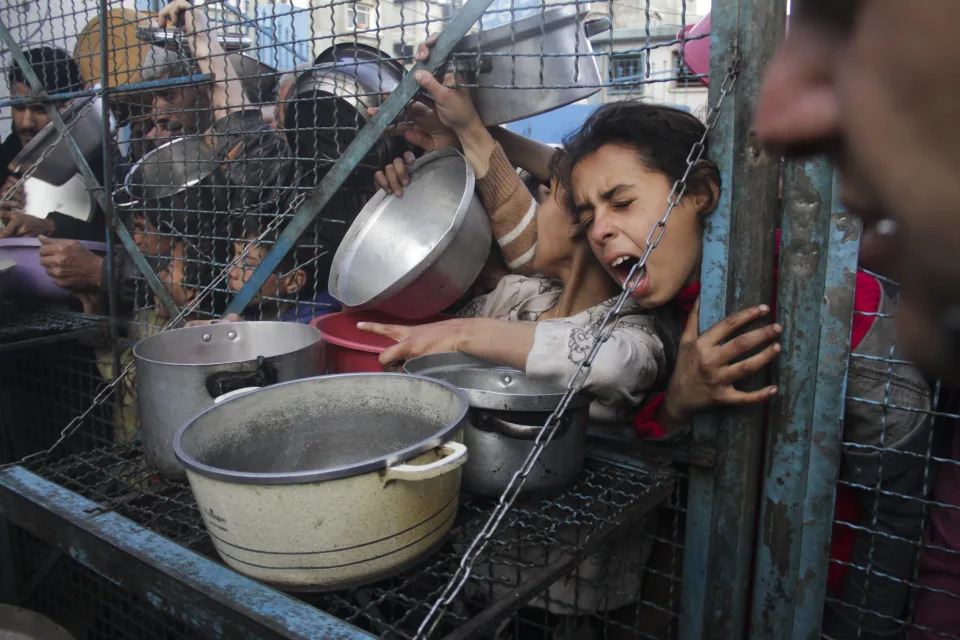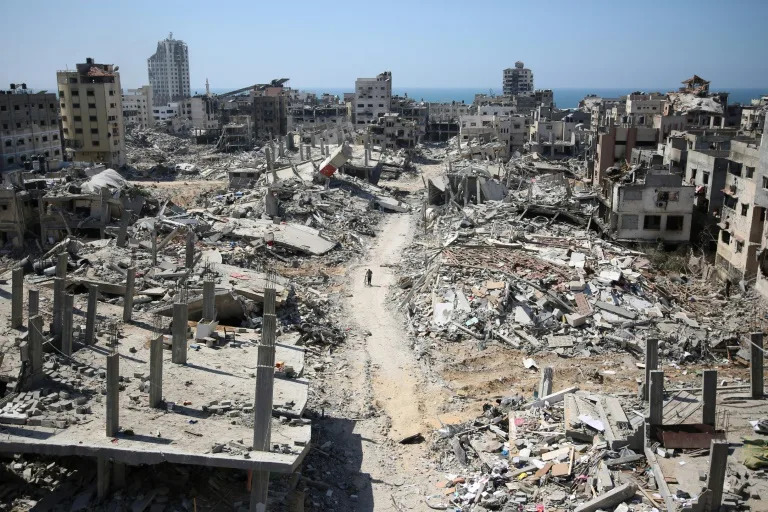The Biden administration opted to pause a shipment of some 3,500 bombs to Israel last week because of concerns the weapons could be used in Rafah where more than one million civilians are sheltering "with nowhere else to go," a senior administration official tells ABC News.
Other weapon transfers from the U.S. to Israel -- including the sale of Joint Direct Attack Munition, or JDAM kits -- are being closely scrutinized as part of a larger review of U.S. military aid to Israel that began last April, the official said.
The decision to pause the shipment and consider slow-walking others is a major shift in policy for the Biden administration and the first known case of the U.S. denying its close ally military aid since the Israel-Hamas war began.
The Biden administration has been reluctant in the past to withhold weapons from Israel despite policy differences because such contracts are typically years in the making, and withholding aid is unlikely to influence Israeli policy decisions in the near term. At the same time, U.S. officials worried that delaying future weapons shipments could put Israel's defense -- a strategic priority for the U.S. -- at risk.
According to the senior administration official, who spoke on condition of anonymity in order to discuss a sensitive policy decision that hadn't been publicly announced, the move came because U.S.-Israeli talks on the humanitarian needs in Rafah "have not fully addressed our concerns."

"As Israeli leaders seemed to approach a decision point on such an operation, we began to carefully review proposed transfers of particular weapons to Israel that might be used in Rafah," the official said in a written statement provided to ABC News.
More than half of the shipment that was paused last week consisted of 2,000-pound bombs. The remaining 1,700 bombs were 500-pound explosives, the official said.
"We are especially focused on the end-use of the 2,000-lb bombs and the impact they could have in dense urban settings as we have seen in other parts of Gaza," the official told ABC News. "We have not made a final determination on how to proceed with this shipment."
Other cases that remain under review include JDAM kits, which enable precision targeting of bombs.
Several other U.S. officials confirmed the policy decision earlier on Tuesday, the same day Israel began what its officials called a "precise" operation in Rafah. U.S. officials said they did not believe those operations were the beginning of the larger-scale invasion that Israel has been planning for weeks; that timeline remains uncertain, they say.
Israeli Prime Minister Benjamin Netanyahu has said operations in Rafah are inevitable and necessary to eliminate Hamas.
The White House declined to discuss specifics at a press briefing, instead pointing to the overall U.S. support for Israel.
"Our commitment to Israel's security remains ironclad," said White House spokesman John Kirby. "We don't, as a matter of course, talk about individual shipments one way or the other. But again, nothing's changed about our commitment to Israel security."
Biden has faced criticism from some Democrats and other voters who say he's not doing enough to stop the mounting death toll of civilians in Gaza. At the same time, support for Israel's operations in Gaza remains strong among Republicans.
On Tuesday, top GOP lawmakers were quick to criticize the delay in arms shipments to Israel that were already approved by Congress.
"This is not the will of Congress," said House Speaker Mike Johnson. "This is an underhanded attempt to withhold aid, without facing accountability. It's undermining what Congress intended."
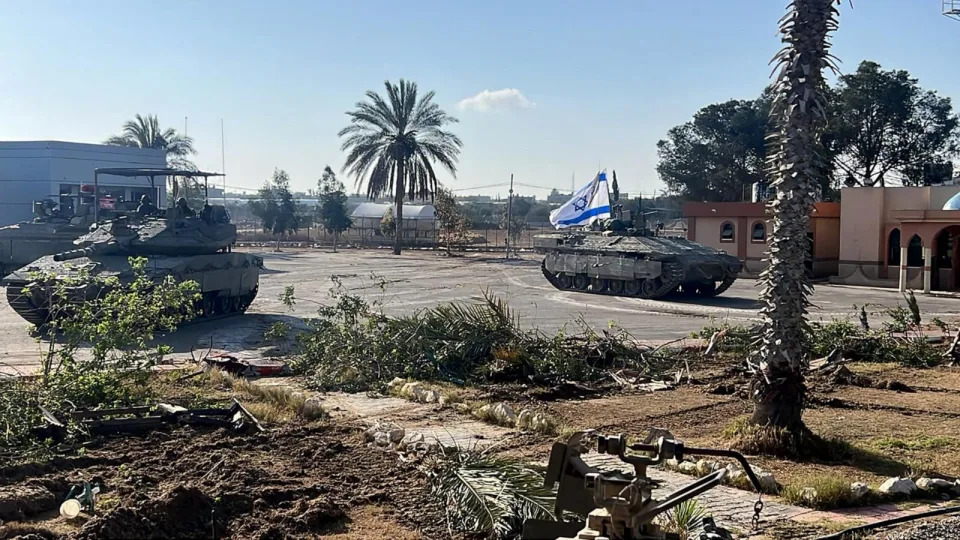
In a letter to Biden, Republican Sens. Jodi Ernst and Ted Budd said they were "shocked" and "deeply concerned" about reports that the Biden administration failed to notify Congress before withholding ammunition to Israel.
"If these reports are true, then you have once again broken your promise to an American ally," they said.
According to the senior administration official, all of the shipments under review come from previously appropriated funds and are not sourced from the latest aid bill passed by Congress.
"We are committed to ensuring Israel gets every dollar appropriated in the supplemental," the official said, noting another $827 million in new future weapons and equipment for Israel has been approved through Foreign Military Financing.
Axios first reported on Sunday that a shipment of ammunition from the U.S. to Israel had been held up.
Defense Secretary Lloyd Austin is expected to testify Wednesday before a Senate panel, where he will likely be asked about U.S. policy.
Get AfriPrime Android Web View app....Click the link to Amazon app store to download https://rb.gy/3xek46
The UN says there's 'full-blown famine' in northern Gaza. What does that mean?
The head of the United Nations World Food Program says northern Gaza has entered “full-blown famine” after nearly seven months of war between Israel and Hamas. But a formal, and highly sensitive, famine declaration faces the complications of politics and of confirming how many people have died.
Cindy McCain in an NBC interview broadcast Sunday said severe Israeli restrictions on humanitarian deliveries to the territory that has long relied on outside food assistance have pushed civilians in the most isolated, devastated part of Gaza over the brink. Famine was now moving south in Gaza, she said.
A WFP spokesman later told The Associated Press that one of the three benchmarks for a formal famine declaration has already been met in northern Gaza and another is nearly met — important details on how far the effort to document deadly hunger has progressed.
Israel faces mounting pressure from top ally the United States and others to let more aid into Gaza, notably by opening more land crossings for the most efficient delivery by truck. Aid groups say deliveries by air and sea by the United States and other countries cannot meet the needs of Gaza's 2.3 million people, a growing number of them reaching the stage of malnutrition where a child's growth is stunted and deaths occur.
Famine had been projected in parts of Gaza this month in a March report by the Integrated Food Security Phase Classification, a global initiative that includes WFP as a partner. It said nearly a third of Gaza's population was experiencing the highest level of catastrophic hunger, and that could rise to nearly half by July.
The next IPC report is expected in July. Israel strongly rejects any claims of famine in Gaza, and its humanitarian agency called McCain’s assertion incorrect. A formal declaration could be used as evidence at the International Criminal Court as well as at the International Court of Justice, where Israel faces allegations of genocide in a case brought by South Africa.
Here's what we know about famine and the hunger crisis in Gaza.
Get AfriPrime Android Web View app....Click the link to Amazon app store to download https://rb.gy/3xek46
WHAT A FAMINE MEANS
According to the IPC, an area is considered to be in famine when three things occur: 20% of households have an extreme lack of food, or essentially starving; at least 30% of children suffer from acute malnutrition or wasting, meaning they're too thin for their height; and two adults or four children per every 10,000 people are dying daily of hunger and its complications.
In northern Gaza, the first condition of extreme lack of food has been met, senior WFP spokesman Steve Taravella told The Associated Press. The second condition of child acute malnutrition is nearly met, he said. But the death rate could not be verified.
Doing so is difficult. Aid groups note that Israeli airstrikes and raids have devastated medical facilities in northern Gaza and displaced much of the population. Along with restrictions on access, they complicate the ability to formally collect data on deaths.
A document explaining famine published in March by the IPC noted, however, that an area can be classified as “famine with reasonable evidence” if two of the three thresholds have been reached and analysts believe from available evidence that the third likely has been reached.
“The bottom line is that people are practically dying from a lack of food, water and medicines. If we are waiting for the moment when all the facts are in hand to verify the final conditions to scientifically declare a famine, it would be after thousands of people have perished,” Taravella said.
THE CAUSES OF CATASTROPHIC HUNGER
Shortly after Hamas attacked Israel on Oct. 7, Israel sealed its borders with Gaza and for weeks prevented aid from entering. Aid groups have said assistance since then has been restricted to a trickle far below the 500 trucks of aid that entered before the war. Since March, as Israel has pointed to progress, an average of 171 trucks per day have entered Gaza, according to the U.S.-established Famine Early Warning Systems Network.
Once inside Gaza, food and other aid doesn't always reach the most vulnerable. Aid groups say access is limited, particularly in the north, due to ongoing fighting and a chaotic security situation.
Northern Gaza, including Gaza City, was the first target of Israel's invasion and became the epicenter of the hunger crisis, with many residents reduced to eating animal feed and foraging for weeds. The IPC report in March said around 210,000 people in the north were in catastrophic levels of hunger.
The very young, the very old and those with health problems are the most affected. On Sunday, a 6-year-old from northern Gaza with cystic fibrosis was taken to the United States on a humanitarian flight after his mother made a video pleading for help. Fadi Al-Zant's jutting ribs and thin arms showed advanced malnutrition.
HOW TO AVERT A FAMINE
Humanitarian groups say it will be difficult to deliver life-saving aid without a cease-fire. Even with a pause in fighting, some experts say the situation in northern Gaza will have life-lasting consequences, especially for newborns and pregnant women.
While Israel has allowed more aid in recent weeks under international pressure, a humanitarian official for the U.S. Agency for International Development told the AP that since March, northern Gaza has not received anything like the aid needed to stave off famine. USAID made the official available on condition of the official’s anonymity, citing security concerns over his work in conflict.
Secretary of State Antony Blinken has welcomed Israel's recent steps to increase deliveries but stressed such moves must be sustained. That's not easy. Israel on Sunday closed its main crossing point for delivering aid after a Hamas attack killed soldiers.
Get AfriPrime Android Web View app....Click the link to Amazon app store to download https://rb.gy/3xek46
VOICES FROM GAZA
Some Palestinians say the increase in aid has eased things slightly, especially by lowering the cost of food.
Gaza City resident Said Siam said prices have dropped in recent weeks. Still, the 18-year-old said he and family members have each lost at least 10 kilograms (22 pounds) since the start of the war, mostly eating one meal of pumpkin soup each day. Fruits, vegetables and fresh meat are still scarce.
Gaza war: Where has Israel told Rafah displaced to go?
Many Palestinians are fleeing eastern parts of Rafah, after the Israeli military ordered their evacuation before starting an operation in the southern Gaza city.
On Monday the military told the tens of thousands of people affected to begin heading towards an “expanded humanitarian area" to the north, where it said they would find field hospitals, tents and basic supplies.
But Palestinians warned that the area was made up of neighbourhoods that were already overcrowded and lacking in essential services, were still coming under intense bombardment, or had been left in ruins by recent fighting.
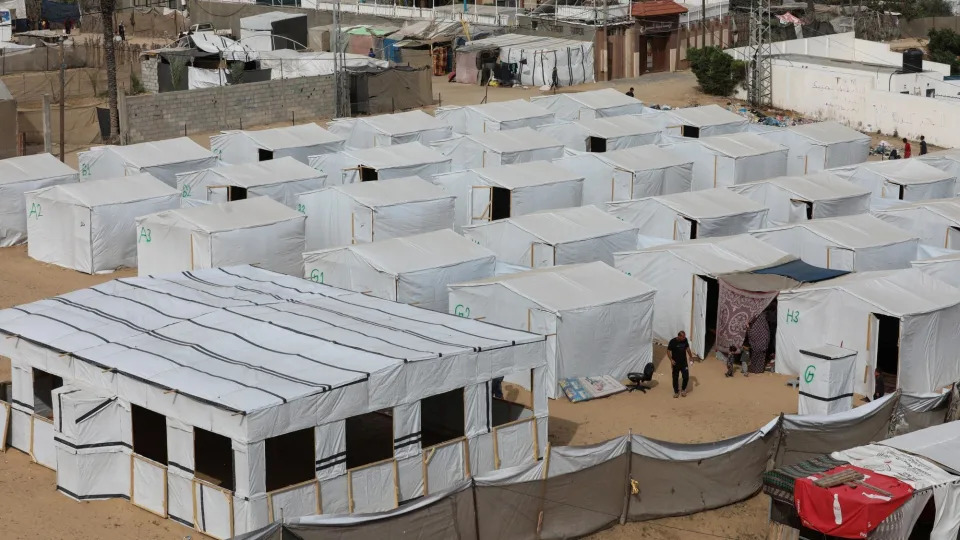
Almost seven months into its war against Hamas, senior Israeli government and military figures have insisted that victory is impossible without a full-scale ground assault on Rafah.
But Israel’s closest ally, the US, has said it has yet to see a credible plan to protect the more than a million displaced Palestinians sheltering there - half of them children.
In March, the Israel Defense Forces (IDF) said it was intending to evacuate most, if not all, of the civilians in Rafah ahead of major offensive and send them to “humanitarian islands” in central Gaza where aid and tents would be provided.
It appeared that plan was being at least partly put into action, when the IDF announced the evacuation of eastern Rafah and the “expansion of the humanitarian area” in nearby al-Mawasi as part of its preparations for ground operations there.
“This expanded humanitarian area includes field hospitals, tents and increased amounts of food, water, medication and additional supplies,” an IDF statement said.
An IDF spokesperson said the evacuation would be “gradual” and affect an estimated 100,000 residents and displaced people. However, a Palestinian Red Crescent official put the figure at 250,000 and a UN official said many others would be on the move because they feared this was only “the first phase in a longer operation”.
Flyers dropped by Israeli aircraft over Rafah on Monday featured a map that identifies nine area blocks in south-eastern Rafah, including al-Shokat, al-Salam, al-Jneineh, Tabbet Zarei and al-Yarmouk, as well as open land around the Israeli-controlled Kerem Shalom and Egyptian-controlled Rafah border crossings.
The UN said the evacuation zone covered more than 30 sq km (12 sq miles) and was home to nine sites sheltering displaced people, as well as three clinics and six warehouses.
The flyer instructed all residents to evacuate immediately and head towards an approximately 60 sq km area stretching north along the Mediterranean coast from al-Mawasi - a narrow strip of agricultural land that has long been an IDF-designated “humanitarian zone” - to the city of Khan Younis and the central town of Deir al-Balah.
The IDF did not provide any details about the locations of the tents for the people being evacuated, but in recent weeks satellite images have shown several encampments constructed north of Rafah and west of Khan Younis.
Get AfriPrime Android Web View app....Click the link to Amazon app store to download https://rb.gy/3xek46
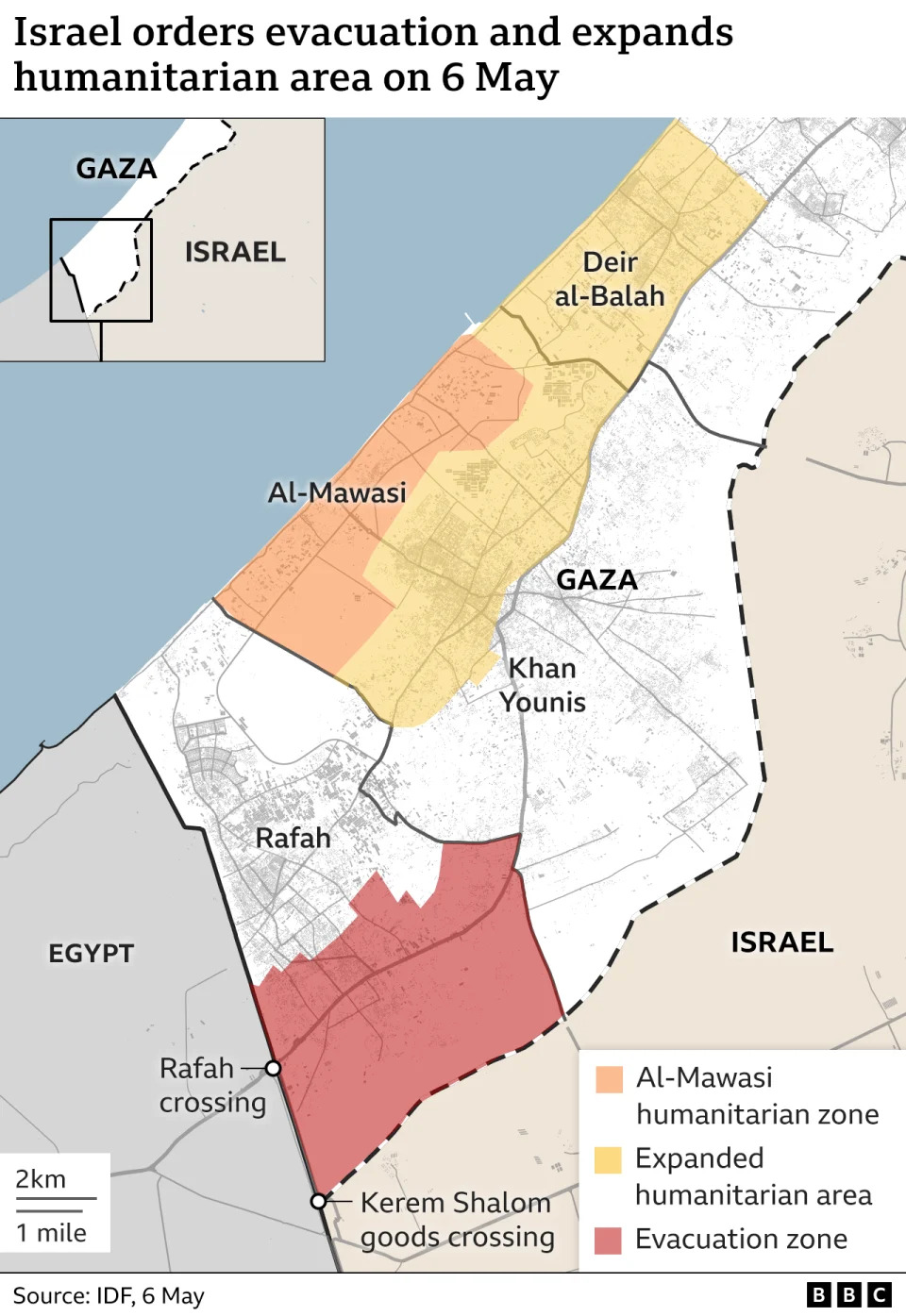
Mohammed Daoud said the 35 members of his family living had “no choice but to leave” after finding out that their house in the Oraiba area was inside the evacuation zone.
“We do not know where to go and how we will manage,” he told the BBC.
Rasha Sheikh Khalil, a displaced woman living in a tent in Rafah with her husband and four children, said: “I had started preparing my bags and getting ready to return to my neighbourhood in Gaza City, but the bad news [on Monday] surprised us.”
“No-one cares about our fate. For seven months we have not tasted comfort and tranquillity.”
Ghada el-Kurd, a mother-of-two who has been displaced six times over the last four months, told the BBC that she was living only 15 minutes away from one of the evacuated areas but was staying put for now.
“I’m so confused... I have no place to go. This was the last place I know,” she said.
“If I want to come back to Khan Younis there is no place - it is all destroyed. [As for] areas of al-Mawasi, they are crowded and I cannot any more live inside a tent - it’s so hot and my health does not allow me to be in such a situation. Regarding Deir al-Balah... there are a lot of air strikes there... and it is a very dangerous area.”
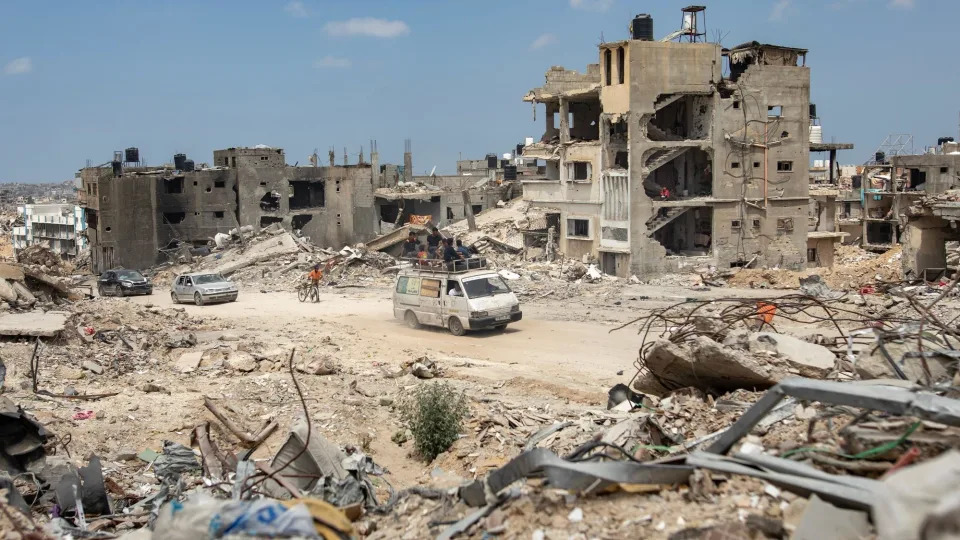
The UN said it was “not taking part in involuntary evacuations or in the setting up of any displacement zones”.
But James Elder, a spokesman for the UN children’s agency, Unicef, who was in Gaza last month, said Ghada el-Kurd’s assessment of the IDF’s humanitarian area was “absolutely spot on”.
"There's nowhere to go. Khan Younis, let's be clear, is rubble,” he told the BBC. “I've walked around those streets of Khan Younis. It's not a little bit destroyed, it's utterly devastated.”
Get AfriPrime Android Web View app....Click the link to Amazon app store to download https://rb.gy/3xek46
“Deir al-Balah... has now got raw sewage running through the streets because sanitation has just been devastated, and al-Mawasi is a beach, a sandy area, and we're starting to hit summer.”
“We've already had reports of children dying of dehydration. So when we're told that people should move to humanitarian zones, that's a terrifying irony when humanitarians aren't working in these zones."
But, he added: “Of course, families will move. They will move because they will move or be bombed.”
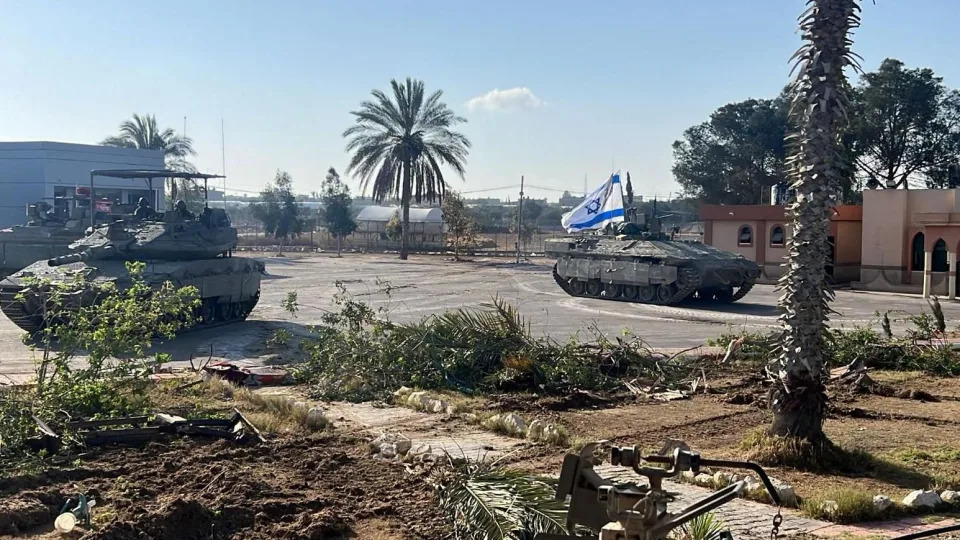
Mr Elder said the aid operation in Gaza was already very fragile because it was “continually undermined by bombings, by insecurity, by denial of access”, but that an Israeli offensive in Rafah could push it to breaking point.
UN officials are particularly concerned that the Rafah and Kerem Shalom crossings - the key entry points for aid into Gaza - could be closed during the current Israeli operation in eastern Gaza.
Kerem Shalom was shut on Sunday after four Israeli soldiers there were killed by 10 rockets launched by Hamas fighters from an area near the Rafah crossing, according to the IDF. But Israel’s prime minister told the US president on Monday that he would ensure Kerem Shalom reopened for humanitarian assistance.
Kerem Shalom was still closed on Tuesday morning, when the IDF announced that its troops had "obtained operational control" of the Gazan side of the Rafah crossing.
The UN agency for Palestinian refugees, Unrwa - which runs the largest humanitarian operation in Gaza - has said it will maintain a presence in Rafah as long as possible and would continue providing lifesaving aid.
But it has also warned that the continued interruption of the entry of aid and fuel supplies at the Rafah crossing would "halt the critical humanitarian response" across Gaza.
"The catastrophic hunger faced by people especially in northern Gaza will get much worse if these supply routes are interrupted," the agency said in a post on X, formerly Twitter, on Tuesday.
The IDF has said it is committed to facilitating humanitarian aid into and within Gaza and that it has established alternative crossings, including two in the north.
'Unlike anything we have studied': Gaza's destruction in numbers
The devastated area around Gaza's Al-Shifa hospital on April 3, 2024.
As well as killing more than 34,000 people and causing catastrophic levels of hunger and injury, the seven-month war between Israel and Hamas has also caused massive material destruction in Gaza.
"The rate of damage being registered is unlike anything we have studied before. It is much faster and more extensive than anything we have mapped," said Corey Scher, a PhD candidate at the City University of New York, who has been researching satellite imagery of Gaza.
As Israel launches an offensive on Rafah, the last population centre in Gaza yet to be entered by its ground troops, AFP looks at the territory's shattered landscape seven months into the war sparked by Hamas's unprecedented October 7 attack.
- Three-quarters of Gaza City destroyed -
Gaza is one of the most densely populated places on the planet, where before the war 2.3 million people had been living on a 365-square-kilometre (140-square-mile) strip of land.
According to satellite analyses by Scher and Jamon Van Den Hoek, an associate professor of geography at Oregon State University, 56.9 percent of Gaza buildings were damaged or destroyed as of April 21, making a total of 160,000.
"The fastest rates of destruction were in the first two to three months of the bombardment", Scher told AFP.
Get AfriPrime Android Web View app....Click the link to Amazon app store to download https://rb.gy/3xek46
In Gaza City, home to some 600,000 people before the war, the situation is dire: almost three-quarters (74.3 percent) of its buildings have been damaged or destroyed.
- Five hospitals now rubble -
During the war, Gaza's hospitals have been repeatedly attacked by Israel, which accuses Hamas of using them for military purposes, a charge the militant group denies.
In the first six weeks of the war sparked by the Hamas attack, which killed more than 1,170 people according to an AFP tally of Israeli official figures, "60 percent of healthcare facilities... were indicated as damaged or destroyed", Scher said.
The territory's largest hospital, Al-Shifa in Gaza City, was targeted in two offensives by the Israeli army, the first in November, the second in March.
The World Health Organization said the second operation reduced the hospital to an "empty shell" strewn with human remains.
Five hospitals have been completely destroyed, according to figures compiled by AFP from the OpenStreetMap project, the Hamas health ministry and the United Nations Satellite Centre (UNOSAT). Fewer than one in three hospitals -- 28 percent -- are partially functioning, according to the UN.
- Over 70% of schools damaged -
The territory's largely UN-run schools, where many civilians have sought refuge from the fighting, have also paid a heavy price.
As of April 25, UNICEF counted 408 schools damaged, representing at least 72.5 percent of its count of 563 facilities.
Of those, 53 school buildings have been completely destroyed and 274 others have been damaged by direct fire.
The UN estimates that two-thirds of the schools will need total or major reconstruction to be functional again.
Regarding places of worship, combined data from UNOSAT and OpenStreetMap show 61.5 percent of mosques have been damaged or destroyed.
- More bombed-out than Dresden -
The level of destruction in northern Gaza has surpassed that of the German city of Dresden, which was firebombed by Allied forces in 1945 in one of the most controversial Allied acts of World War II.
According to a US military study from 1954, quoted by the Financial Times, the bombing campaign at the end of World War II damaged 59 percent of Dresden's buildings.
Get AfriPrime Android Web View app....Click the link to Amazon app store to download https://rb.gy/3xek46
In late April, the head of the UN mine clearance programme in the Palestinian territories, Mungo Birch, said there was more rubble to clear in Gaza than in Ukraine, which was invaded by Russia more than two years ago.
The UN estimated that as of the start of May, the post-war reconstruction of Gaza would cost between 30 billion and 40 billion dollars.
Inside the Gaza ceasefire deal that was accepted by Hamas but rejected by Israel
Hamas has accepted the a proposed ceasefire deal over the war in Gaza – but Israel, who have just launched attacks on Rafah – the last remaining area of the Gaza Strip yet to be invaded – has rejected it. Talks over a truce are said to be continuing.
Israeli Prime Minister Benjamin Netanyahu said the proposal, which was agreed over the weekend and calls for the eventual complete withdrawal of Israel’s military from the Gaza Strip, would “leave Hamas intact”.
“Surrendering to the demands of Hamas would be a terrible defeat for the State of Israel," he said in a video statement.
Here we look at exactly what was included in the proposal.
The proposed plan is broken down into three 42-day stages, with the majority of requirements of both sides taking place during the first stage.
In the first 42 days, there would be “a temporary cessation of military operations between the two parties”, followed by a “withdrawal of Israeli forces eastward and away from densely populated areas”.
That withdrawal will happen in three stages. The first, after three days, should see Israel withdraw from strongholds in the northern half of the enclave and “dismantle military sites and installations in this area”.
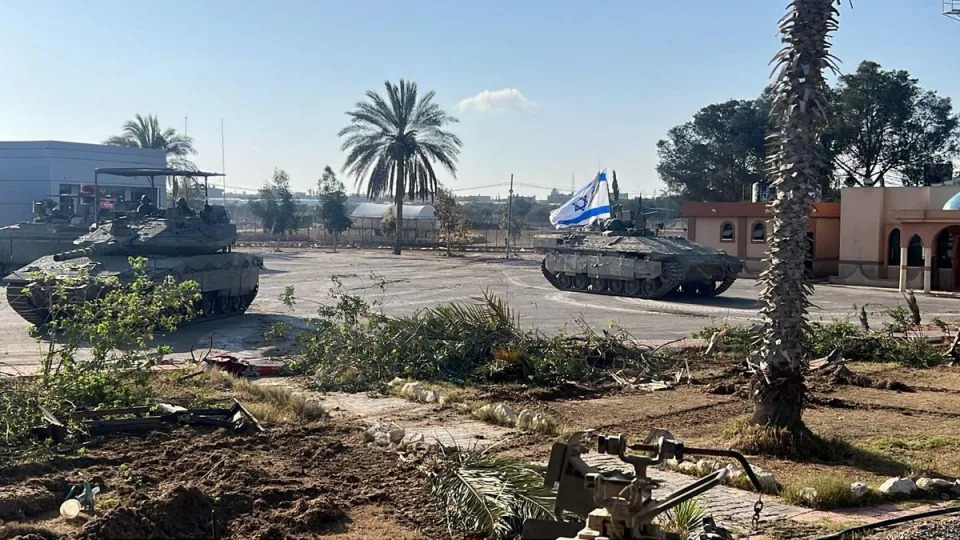
The second stage, after 22 days of the ceasefire, which is when half the living civilian captives in Gaza, including female soldiers, should have been released, the Israeli military should withdraw from areas in central Gaza.
At the end of the first 42-day stage, Israel should be prepared to withdraw entirely from the Gaza Strip.
Internally displaced civilians in Gaza should be permitted to return to their homes as the Israeli military withdraws from the affected area.
The proposal, which Al Jazeera has seen, adds that Israel’s warplanes should cease flying over Gaza for 10 hours a day and 12 hours when Israeli hostages are being swapped for Palestinian prisoners.
Meanwhile, 600 trucks of humanitarian aid are due to be delivered on a daily basis, starting from the first day of the ceasefire.
The proposal reads: “Humanitarian aid, relief materials and fuel (600 trucks a day, including 50 fuel trucks, and 300 trucks for the north) shall be allowed into Gaza in an intensive manner and in sufficient quantities from the first day. This is to include the fuel needed to operate the power station, restart trade, rehabilitate and operate hospitals, health centres and bakeries in all parts of the Gaza Strip, and operate equipment needed to remove rubble. This shall continue throughout all stages.”
Get AfriPrime Android Web View app....Click the link to Amazon app store to download https://rb.gy/3xek46
Infrastructure, including electricity, water, sewage, communications and roads, will be rebuilt and all equipment needed for reconstruction, as well as the removal of rubble and debris, should be allowed into Gaza.
A minimum of 60,000 caravans and 200,000 tents will also be allowed into the enclave to house those whose homes have been destroyed.
Regarding hostages, the text reads: “During the first phase, Hamas shall release 33 Israeli captives (alive or dead), including women (civilians and soldiers), children (under the age of 19 who are not soldiers), those over the age of 50, and the sick, in exchange for a number of prisoners in Israeli prisons and detention centres.”
The ratio of swaps would be one Israeli hostage for 30 Palestinian prisoners, and the swaps will be direct, namely one female soldier for one female prisoner.
The prisoners will be those being held in Israeli prisons and named on the release list by Hamas, a list that will also be approved by Israel.
The first three Israeli hostages will be released on the third day of the agreement, after which Hamas should release three additional hostages every seven days, starting with women, including female soldiers.
In the sixth week of exchanges, Hamas should “release all remaining civilian detainees”.
The second and third stages relate to Israel’s “complete withdrawal” from the Gaza Strip and the subsequent reconstruction of the enclave.
The proposal says the second stage concerns “a return to sustainable calm”, including a permanent cessation of military operations and the final exchanges of captives and prisoners, which should include all remaining living Israeli men, both civilian and military.
The third and final stage should involve the “exchange of the bodies and remains of the dead on both sides after they have been retrieved and identified”.
A reconstruction plan over a period of three to five years will then commence, including the rebuilding of homes, civilian facilities and infrastructure, under the supervision of Egypt, Qatar and the United Nations.



